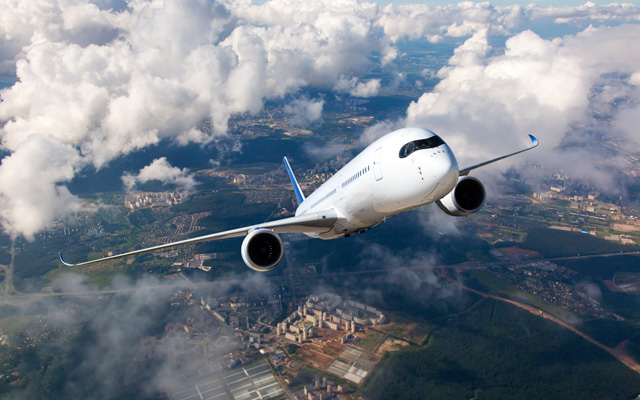- Long-term trend of air accidents has declined over 2005 to 2024
- Aviation leaders emphasise airlines’ safety culture and “zero tolerance” for safety breaches
- 2024 accidents attracted widespread media attention, but the travelling public has continued to choose to fly

The IATA Annual Safety Report – 2024, released at the end of February, has emphasised a long-term significant reduction in accident rates amid current public concerns about the safety of air travel.
The report noted 1.13 accidents per million sectors in 2024 compared to 3.72 accidents per million sectors in 2005.
However, the 46 accidents in 2024 based on IATA’s classification criteria represent a nine per cent increase compared to 2023, the safest year on record for commercial airline travel.
Among accidents listed in the IATA Annual Safety Report – 2024 are:
January 2025: A Japan Airlines Airbus 350-900 collided with a Japan Coast Guard aircraft at Haneda Airport. While all passengers on the A350-900 escaped, five on board the Japan CoastGuard aircraft lost their lives.
January 2025: An Alaska Airlines Boeing 737-9 MAX suffered a fuselage separation while taking off from Portland’s airport. All 177 passengers survived the emergency landing.
May 2024: An SIA Boeing 777-300 experienced a severe turbulence event, resulting in an emergency landing in Bangkok and one fatality.
July 2024: A Saurya Airlines CRJ-200 crashed on take-off in Nepal and claimed 18 lives
Airlines successfully transported five billion passengers worldwide on more than 40 million flights, and IATA asserts commercial aviation remains one of the safest modes of public transport.
Director general, Willie Walsh, said: “Even with recent high profile aviation accidents, it is important to remember that accidents are extremely rare.
“There were 40.6 million flights in 2024 and seven fatal accidents… a decade ago, the five-year average (2011-2015) was one accident for every 456,000 flights. Today, the five-year average (2020-2024) is one accident for every 810,000 flights.”
The topic of air safety was also raised at the recent Aviation Festival Asia (AFA) in Singapore. Julia Simpson, president and CEO of WTTC, and airline chiefs echoed the industry’s safety-first principle and regulatory measures that make flying the safest means of transportation.
In fact, airlines cannot fly if they do not meet the regulatory requirements, asserted Richard Nuttal, CEO, SriLankan Airlines.
Simpson, formerly with British Airways, reiterated that the industry’s has “zero tolerance” for air incidents.
Easily forgiven
While recent air incidents have made prominent news headlines, the Association of Asia Pacific Airlines director general, Subhas Menon, told TTG Asia that “air travel confidence has not been dented”.
Menon continued: “Forward bookings have not been affected by these incidents. Air transport is still the safest mode of travel and people know that.”
An AFA commentator’s quip that “people have short memories” seems to ring true.
IATA’s January 2025 data shows global passenger demand, measured in revenue passenger kilometres, was up 10 per cent compared to January 2024, and total capacity, measured in available seat kilometres, was up 7.1 per cent year-on-year.
The January load factor was 82.1 per cent (up 2.2 percentage points compared to January 2024), an all-time high for the month.
International demand rose 12.4 per cent compared to January 2024. Capacity was up 8.7 per cent year-on-year, and the load factor was 82.6 per cent (up 2.7 percentage points compared to January 2024), an all-time high for the month.
Domestic demand rose 6.1 per cent compared to January 2024. Capacity was up 4.5 per cent year-on-year. The load factor was 81.2 per cent (up 1.2 percentage points compared to January 2024), an all-time high for the month.
IATA’s Walsh commented: “We’ve seen a notable acceleration in demand this January, with a particularly strong performance by carriers based in the Asia-Pacific region.”
In the 2025 World’s Safest Airlines top 25 ranking, Airline Ratings placed full-service regional carriers Air New Zealand, Qantas and Cathay Pacific in the first three spots; ANA, EVA Air, Korean Air, Japan Airlines (JAL) and Vietnam Airlines also made the list.
In the low-cost carrier category, the list includes Hong Kong Express, Jetstar Group, AirAsia, VietJet Air, IndiGo, Cebu Pacific and ZipAir.
While it may be considered taboo and airlines are often reluctant to discuss their safety records, Steven Ler, president of the National Association of Travel Agents Singapore (NATAS), stated that winning an award serves as a valuable reference point for gaining passenger trust.
In addition to promoting the “luxury of the seats,” he suggested that not enough is being done to market safety to customers, such as highlighting features like “a young fleet” or “aircraft less than five years old”.
He said: “Airlines from all over the world fly to Singapore, but most Singaporeans trust Singapore Airlines and see it as the main carrier.
“New airlines like Gulf Air, a Gold award winner in the Middle East, may be unfamiliar.”
Gulf Air was the official airline partner of the recent NATAS Fair, while Singapore Airlines was the strategic airline partner.
Ler, who is also the executive director of UOB Travel Planners, continues to fly with Garuda Indonesia despite the airline’s struggles with its safety record over the years.
He noted that most incidents are “one-off” and that the airline has “put in the effort to improve”, describing it as a “value-for-money airline”.











